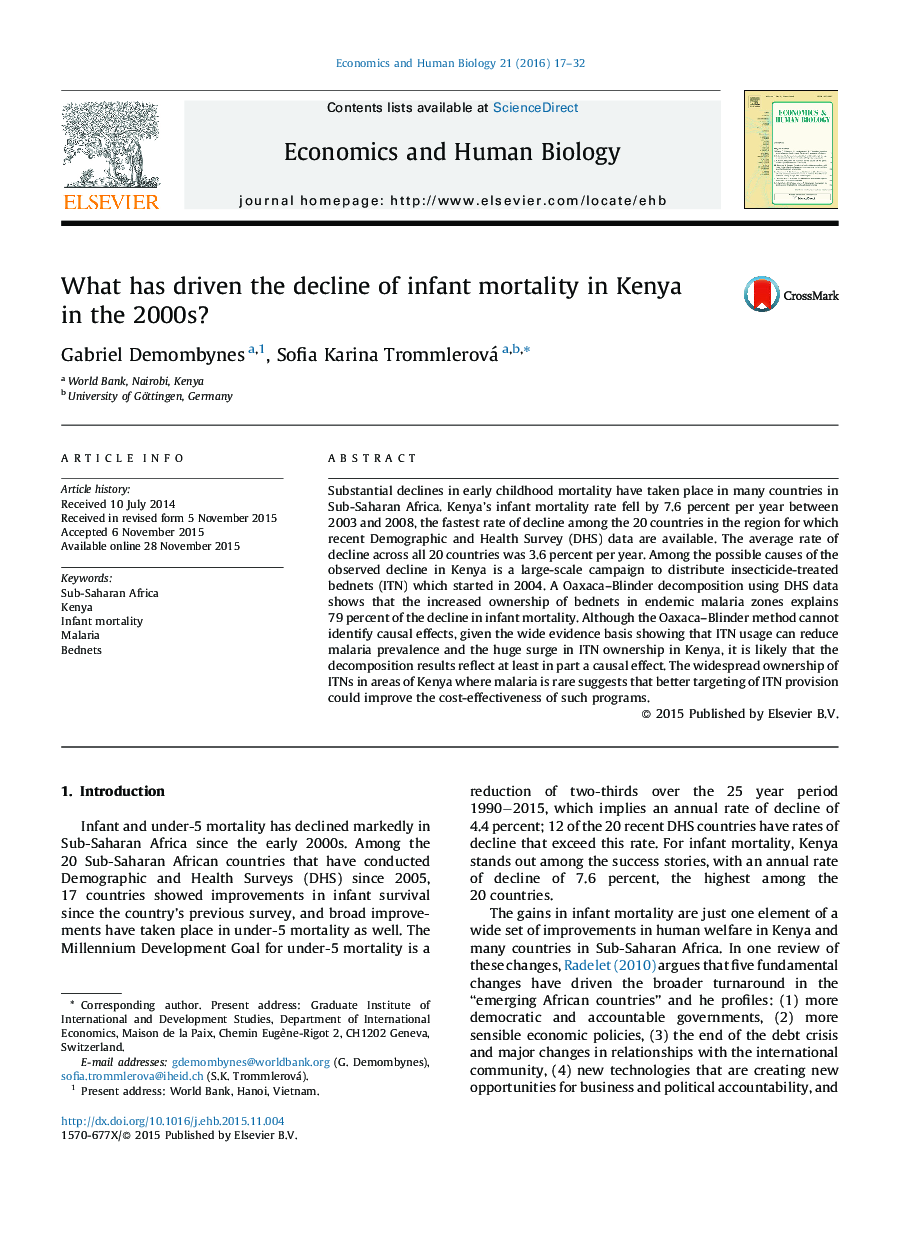| Article ID | Journal | Published Year | Pages | File Type |
|---|---|---|---|---|
| 5056849 | Economics & Human Biology | 2016 | 16 Pages |
â¢Substantial declines in infant and under-5 mortality took place in 2000s in many countries in Sub-Saharan Africa.â¢Kenya's infant mortality rate shows the fastest rate of decline among the 20 countries in the region-7.6 percent per year.â¢Increased ownership of insecticide-treated bednets (ITNs) in endemic malaria zones explains 79 percent of this decline.â¢Widespread ownership of ITNs in areas of Kenya where malaria is rare suggests that better targeting of ITN provision programs could improve their cost-effectiveness.
Substantial declines in early childhood mortality have taken place in many countries in Sub-Saharan Africa. Kenya's infant mortality rate fell by 7.6 percent per year between 2003 and 2008, the fastest rate of decline among the 20 countries in the region for which recent Demographic and Health Survey (DHS) data are available. The average rate of decline across all 20 countries was 3.6 percent per year. Among the possible causes of the observed decline in Kenya is a large-scale campaign to distribute insecticide-treated bednets (ITN) which started in 2004. A Oaxaca-Blinder decomposition using DHS data shows that the increased ownership of bednets in endemic malaria zones explains 79 percent of the decline in infant mortality. Although the Oaxaca-Blinder method cannot identify causal effects, given the wide evidence basis showing that ITN usage can reduce malaria prevalence and the huge surge in ITN ownership in Kenya, it is likely that the decomposition results reflect at least in part a causal effect. The widespread ownership of ITNs in areas of Kenya where malaria is rare suggests that better targeting of ITN provision could improve the cost-effectiveness of such programs.
